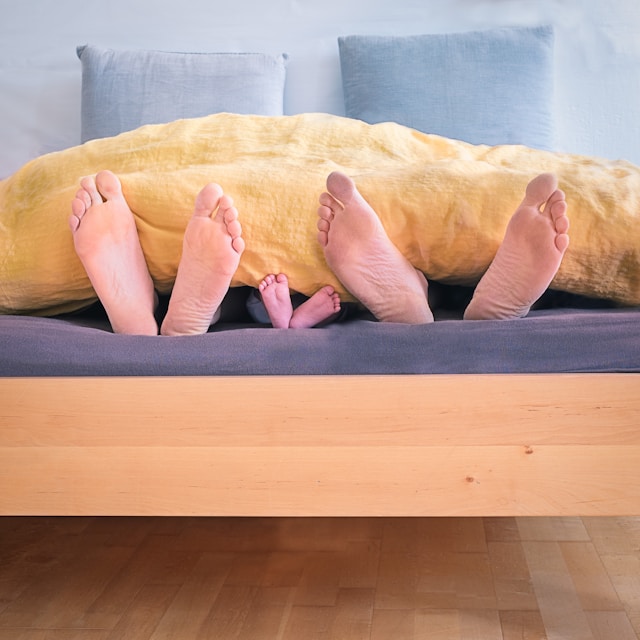One of the main things I focus on as a foundational practice in my sessions with individuals and couples is arousal regulation. That is, learning how to be aware of and manage stress and stressors in real-time as it affects one’s nervous system.
I actually think that understanding our own nervous system and personal window-of-tolerance, as well as how to stay within it or get back in it, is one of the most important skills we can learn as adults along with emotional intelligence, effective communication and body awareness. It’s an essential element in being able to function optimally in a complex and challenging world.
With pandemics, wars, and natural disasters flooding the news it’s easy and natural to feel heightened or at the edge of our thresholds.
There’s also a lot of social tension in the air. When mutuality and reciprocity exist between people, we say they are attuned. When mutuality and reciprocity are absent, we say they’re misattuned. What I’m seeing a lot of is collective misattunement. Where people’s interactions contain misattunements dysregulation or heightened arousal often follow. One of the main reasons couples come to see me is because of problems arising from misattunement.
Long-term, dysregulation and heightened arousal states can lead to chronic health conditions and worse, so it’s vitally important to have conscious strategies for regulation. That’s one reason I consider it a foundational practice.
From infancy, we learn to regulate our state of arousal and maintain a level optimal for emotional and physical health. We have four modes of arousal regulation:
- Autoregulation
- External regulation
- Interactive regulation
- Self-regulation
These range from primitive to complex, from non-social to social, and are all normal ways of dealing with stress. However, an over-reliance on one mode can make it harder to draw upon others when needed. It can also cause stress in relationships when a partner relies on one style of regulation more than another.
Knowing these four modes and being able to draw upon them equally will help you manage your own regulation more easily.
Autoregulation
Features:
- Pro-self
- Primitive form of self-stimulation and self-soothing
- No other person required
- Overused by people with avoidant attachment
Autoregulation is the earliest and simplest form of arousal regulation. It’s also called self-stimulation or self-soothing as it doesn’t require another person. It is totally non-social and non-interactive and is also innate; we are born knowing how to autoregulate our nervous systems. Think of a baby closing their eyes, sucking their thumb or crying themself to sleep as ways of autoregulating stress. Autoregulation relies on automatic reflexes and behaviours as well as more conscious activities.
As adults, we use many different means of autoregulation (whether stimulating or relaxing): television, reading, self-pleasure, eating, drinking, drugs, daydreaming, meditation, scrolling social media or playing video games. And so on.
This also means autoregulation can be somewhat dissociative because we are not relying on anyone else for engagement, stimulation or stress and can therefore lose track of time and presence. Autoregulation can also be a factor in many creative pursuits such as the arts, writing, dancing or performing. When we’re in a flow state, we are experiencing autoregulation.
However, if one partner over-relies on autoregulation as a self-soothing or self-stimulation strategy this can become problematic as it manifests in a relationship as avoidance, withdrawal, addiction or through obsessive compulsive tendencies, all of which put the relationship as secondary to the object of focus. Autoregulation is important and necessary, but it shouldn’t be an individual’s sole focus.
External regulation
Features:
- Pro-self
- Primitive form of being regulated by another
- Requires someone else
- Overused by people with anxious attachment
In our early years, our primary adult caregiver provides an external regulatory function that manages our physical and emotional needs as well as looks after our nervous system and arousal states. Adolescents and adults can also require external regulation, especially in overwhelming or stressful situations where they can’t manage themselves.
Some individuals become overly dependent on external regulation and from an attachment perspective are those who demonstrate anxious or angry resistant attachment styles. Whereas avoidant attachment types rely too much on autoregulation, anxious attachment types swing towards external regulation to get their needs for calming or soothing met.
On the face of it, external regulation might appear to be mutual or interactive as it requires two people. It’s actually one-way, as it’s not a reciprocal interaction like co-regulation, which I describe below. In external regulation, I’m essentially using my partner to regulate me, which is fine, so long as I don’t become dependent on it.
Examples of dependency on external regulation include constant venting, frequent needs for attention, affection or sex or co-dependency (not being able to function without one’s partner).
Co-regulation
Features
- Pro-social, pro-relational
- Face-to-face, eye-to-eye, skin-to-skin, belly-to-belly
- More complex form of regulation and attunement
- Nob-verbal and mutually managed
Co-regulation is the process where two (or more) individuals co-manage and balance their arousal. Just as self-regulation (below) is more developmentally advanced than autoregulation, co-regulation is more advanced than self-regulation. Developmentally, interactive play by infants and caregivers forms the foundation for co-regulation. When interactive play is absent infants turn instead toward autoregulation as an adaptation but at great cost, as it becomes more difficult to engage interactively as they grow older. As described above, a reliance upon autoregulation manifests as relationship avoidance.
Co-regulation is fundamentally interpersonal, externally focused, and pro-relational. Couples that rely on co-regulation show a two-person psychological orientation rooted in true mutuality. When I am co-regulating with my partner, I am attuned to them and engaged with soothing their nervous system and vice versa.

For that reason, it’s one of the things I emphasise most in my work with couples, teaching attunement to each other’s states and ways of keeping each other regulated through that attunement. Co-regulation is mainly non-verbal. We don’t calm each other’s arousal through words but through synchronising our nervous systems such as through gazing, smiling, sex, touch or cuddling.
Self-regulation
Features
- Pro-social AND pro-self
- Inhibitory and limiting
- Requires a developed brain and ability to exert self-control
Developmentally, self-regulation follows co-regulation at around 10 to 12 months, and we learn it through watching our caregivers manage our internal states. For example, when an infant is sad and cries their caregiver can sit with the infant’s sadness and soothe the infant without becoming overwhelmed themselves or trying to shut down the infant’s expression.
Our caregiver’s face, tone and volume of voice, and actions empathically attune to an infant’s state, and this exerts a regulatory function on their nervous system. Also, a caregiver can name or verbalise a child’s emotional state for them (e.g. “poor baby, you look sad”) until such time the child develops to the point where they are able to do this on their own without their caregiver. Barring other factors, we are only ever as good at arousal regulation as our earliest caregivers. They are the models and modulators of our early emotional experiences.
When our caregivers don’t teach us to self-regulate effectively, we must learn as adults. I spend a lot of time with individuals teaching self-regulation strategies.
So, the first step in self-regulation is consciously recognising what we are feeling and being able to respond to it. It’s a more complex mode of regulation than autoregulation because it requires self-awareness, self-understanding, self-control and tolerance of discomfort or frustration.

Examples of self-regulation include taking deep breaths, calming one’s voice, taking steps to maintain eye contact or connection with other individuals, even when feeling aroused. For this reason, effective co-regulation requires effective self-regulation. We need to regulate ourselves before we can come into connection with others.
Reach out to learn more about couples therapy and how we can help you and your partner learn to regulate each other for a deeper relationship.

